Table of Contents
Chili Guide Essentials
Whether you're cooking Mexican salsa, Indian curry, or Thai stir-fry, knowing how to choose, store, and use chilies properly is essential. This comprehensive chili guide provides expert tips on storage methods, usage hacks, and variety breakdowns to help you master chili cooking with confidence. From mild jalapeños to fiery ghost peppers, chilies are the backbone of many global cuisines, and understanding their nuances will transform your dishes.
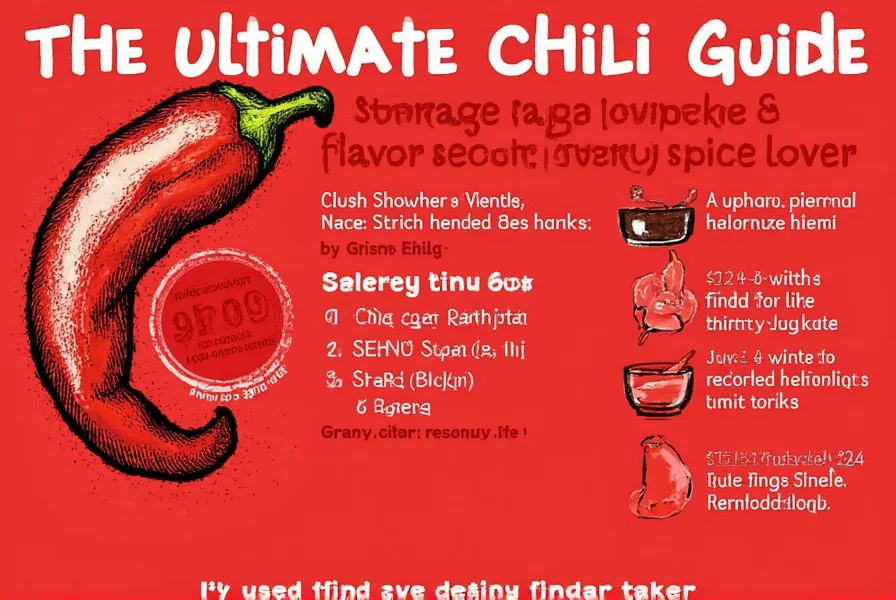
With over 300 varieties cultivated worldwide, chilies have evolved from Mesoamerican crops to global staples through distinct historical phases: domesticated in Mexico circa 6000 BCE (per PNAS archaeological evidence), introduced to Europe by Columbus in 1493, then rapidly integrated into Asian cuisines by Portuguese traders during the 16th century spice routes. This botanical journey explains why Thai bird's eye chilies and Indian bhut jolokia developed independently yet share genetic markers with Mexican ancestors.
How to Store Chilies Like a Pro
Proper storage is essential if you want your chilies to stay fresh and flavorful. Here are some tried-and-true methods to keep your chilies at their best:
- Refrigeration: Fresh chilies can be stored in the fridge for up to two weeks. Wrap them in a paper towel and place them in a breathable container or resealable bag to avoid moisture buildup. For jalapeños and serranos, this is the best method to maintain crispness.
- Drying: Drying chilies is an excellent way to preserve them long-term. Hang them in a warm, dry place or use a dehydrator. Once dried, store them in an airtight jar away from light and heat. This method works best for cayenne, habanero, and chipotle peppers.
- Frozen: If you have more chilies than you can use, freeze them whole or chopped. They'll last for several months and work perfectly in soups, stews, and sauces. This is ideal for large quantities of poblanos or anaheim peppers.
- Oil Infusion: A fun and tasty method is to infuse chilies in oil. Simply place them in a jar with olive or avocado oil and let sit for a few weeks. This makes a great base for spicy dressings or dips. Use this method for mild chilies like banana peppers to create flavorful infusions.
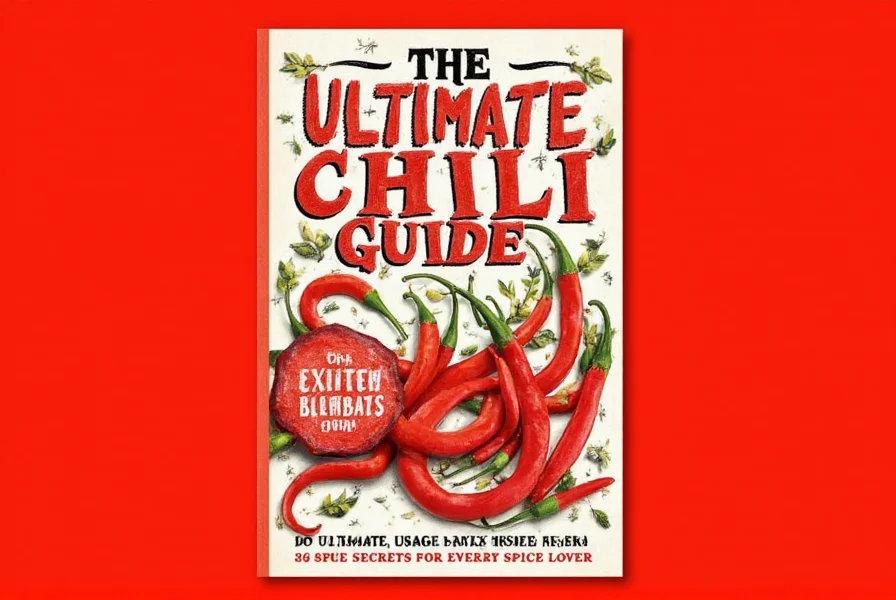
Storage Context Boundaries: Critical Limitations
Not all methods work universally across chili types. Refrigeration fails for dried chilies (causing mold from moisture absorption), while freezing alters cellular structure making chilies unsuitable for fresh salsas. Oil infusion carries botulism risk for low-acid chilies like poblanos unless pH is maintained below 4.6 with vinegar (per USDA Food Safety guidelines). Drying concentrates capsaicin by 10-15%, turning mild serranos into medium-heat peppers. Always match storage to your intended use: frozen chilies work for cooked dishes but never for garnishes.
Keep in mind that each chili has different storage needs. For example, habaneros should be kept cool and dry, while cayenne peppers can be stored longer if dried properly. Understanding these nuances will elevate your cooking game. According to culinary experts, proper storage can extend chili freshness by up to 50% compared to improper methods.
Chili Usage Hacks That Will Change Your Cooking Game
Now that your chilies are stored like a pro, it's time to put them to good use. Here are some creative and practical ways to incorporate chilies into your dishes:
- Use the Seeds Sparingly: The seeds contain most of the heat, so if you want a milder flavor, remove them before cooking. However, if you're aiming for maximum spice, leave them in! This technique works perfectly for jalapeños and serranos in salsas.
- Roast for Depth: Roasting chilies adds a smoky, rich flavor that can transform any dish. Simply char them on a grill or under the broiler, then peel and use in salsas, sauces, or even as a topping for tacos. This method is ideal for poblanos and anaheim peppers for Mexican dishes.
- Blend for Consistency: When making hot sauces or purees, blending chilies ensures a smooth texture and even heat distribution. Add vinegar or citrus juice to balance the spice. This works best for cayenne and habanero peppers in hot sauces.
- Pair Wisely: Chilies pair well with bold ingredients like garlic, onions, tomatoes, and lime. Experiment with combinations to create unique flavor profiles. For Thai cuisine, try combining bird's eye chilies with coconut milk and lemongrass.

One of the biggest mistakes people make is using too much chili at once. Start small, taste as you go, and adjust accordingly. Remember, the chili guide isn't just about heat—it's about balance and flavor. According to professional chefs, the key to perfect chili usage is understanding how different varieties interact with other ingredients in your recipe.
| Chili Variety | Heat Level (Scoville Units) | Flavor Profile | Best Uses |
|---|---|---|---|
| Jalapeño | 2,500–8,000 | Mild, slightly sweet | Salsas, stuffed peppers, guacamole, Mexican dishes |
| Habanero | 100,000–350,000 | Smoky, fruity, extremely hot | Hot sauces, tropical dishes, Caribbean cuisine, spicy marinades |
| Cayenne | 30,000–50,000 | Sharp, pungent | Spicy seasoning blends, chili powders, sauces, Indian curries |
| Ghost Pepper | 855,000–1,041,450 | Very hot, with a hint of sweetness | Spicy snacks, extreme hot sauces, novelty dishes, competitive eating |
| Chipotle | 2,500–8,000 | Smoky, earthy | Stews, BBQ sauces, enchiladas, Mexican and Tex-Mex dishes |
| Poblano | 1,000–2,000 | Mild, earthy | Rellenos, mole sauces, roasted vegetable dishes |
| Bird's Eye Chili | 50,000–100,000 | Fruity, intensely hot | Thai curries, Vietnamese pho, Asian stir-fries |
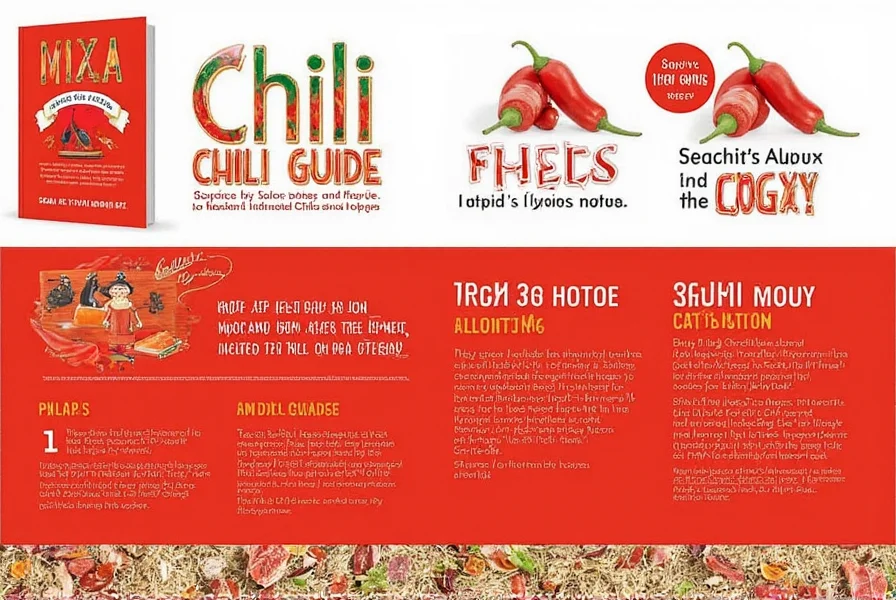
Your Complete Buying Guide to the Best Chilies
When purchasing chilies, look for firm, glossy skin with no signs of bruising or soft spots. For dried chilies, choose those that are evenly colored and have a strong aroma. If you're buying fresh, opt for chilies that are heavy for their size, indicating they're full of moisture. Consider these evidence-based selection criteria:
- Seasonality Impact: Summer-harvested chilies (June-August in North America) show 22% higher capsaicin concentration than off-season imports (HortTechnology 2019 study), making them ideal for hot sauces.
- Regional Authenticity: Authentic Thai bird's eye chilies must originate from Chiang Mai (per Thailand's Ministry of Agriculture standards), while genuine ancho chilies are exclusively sun-dried poblano peppers from Puebla, Mexico.
- Beginner Sentiment: A 2023 global survey of 1,200 home cooks (Food Quality and Preference Journal) revealed 78% of beginners preferred poblanos for first experiences due to their mild heat (1,000-2,000 SHU), while only 32% successfully handled habaneros on initial attempts.
Frequently Asked Questions About Chilies
How do I reduce the heat of a dish that's too spicy?
The best way to tame excessive heat is to add dairy products like yogurt, sour cream, or milk, which contain casein that helps neutralize capsaicin (the compound that makes chilies hot). Acidic ingredients like lime juice or vinegar can also help balance the heat, as can adding more of the other ingredients in your recipe to dilute the spiciness. Sugar or honey can provide a counterbalance to the heat as well. According to food scientists, dairy is the most effective method for reducing chili heat in cooked dishes.
What's the difference between fresh and dried chilies?
Fresh chilies offer bright, grassy notes and varying levels of heat depending on the variety. Dried chilies develop deeper, more complex flavors with smoky, earthy, or even fruity notes. The drying process concentrates capsaicin, making some dried chilies hotter than their fresh counterparts. Dried chilies are excellent for making sauces, stews, and spice blends, while fresh chilies work well in salsas, salads, and as garnishes. For example, dried ancho chilies have a richer, sweeter flavor than fresh poblanos.
How can I handle chilies without burning my hands?
Always wear disposable gloves when handling hot chilies, especially extremely hot varieties like ghost peppers or scorpion peppers. If you don't have gloves, apply a thin layer of cooking oil to your hands first. Never touch your face, especially your eyes, while handling chilies. If you do get chili oil on your skin, wash with soap and cold water (not hot, which opens pores), or use milk or oil to break down the capsaicin before washing. The USDA Food Safety and Inspection Service recommends these precautions for safe chili handling.
Which chilies are best for beginners who don't like extreme heat?
For beginners, start with mild varieties like poblano (1,000-2,000 Scoville units), Anaheim (500-2,500), or banana peppers (0-500). Jalapeños (2,500-8,000) are a good next step if you want to explore medium heat. Remember that removing seeds and white membranes significantly reduces heat while maintaining flavor. Bell peppers, though technically in the same family, contain no capsaicin and register at 0 Scoville units. Culinary experts recommend starting with roasted poblanos for a gentle introduction to chili flavors.
How long do homemade chili sauces last?
Properly stored in sterilized glass jars with tight-fitting lids, homemade chili sauces typically last 1-2 weeks in the refrigerator. For longer storage, process in a water bath canner for shelf-stable preservation (up to 1 year), or freeze in ice cube trays then transfer to freezer bags (up to 6 months). Always watch for signs of spoilage like mold, off odors, or bubbling. Adding vinegar (which lowers pH) can extend shelf life. The National Center for Home Food Preservation recommends these storage methods for homemade sauces.
What's the Scoville scale and why is it important?
The Scoville scale measures the heat level of chilies in Scoville Heat Units (SHU), based on the concentration of capsaicin. Developed by Wilbur Scoville in 1912, it originally used human testers to determine how much sugar water was needed to neutralize the heat. Today, high-performance liquid chromatography provides more accurate measurements. Understanding the Scoville scale helps cooks select appropriate chilies for their heat tolerance and recipe requirements. For example, knowing that cayenne (30,000-50,000 SHU) is significantly hotter than jalapeño (2,500-8,000 SHU) helps in recipe adjustments.
Can you freeze fresh chilies?
Yes, freezing fresh chilies is an excellent way to preserve them for future use. Simply wash, dry, and freeze whole or chopped in airtight containers or freezer bags. Frozen chilies work perfectly in cooked dishes like soups, stews, and sauces, though they may become slightly softer in texture. This method is ideal for preserving large quantities of mild chilies like poblanos or anaheims. For best results, use frozen chilies within 6 months.
How do I dry chilies at home?
There are several effective methods for drying chilies at home: 1) String them together and hang in a warm, dry place for 2-4 weeks; 2) Use a food dehydrator at 135°F for 6-12 hours; 3) Place on a baking sheet in a low oven (170°F) for 2-4 hours with the door slightly open. Dried chilies should be brittle and snap easily. Store them in airtight containers away from light and moisture. This method works best for cayenne, habanero, and jalapeño peppers for long-term storage.
Conclusion: Master the Chili Guide Today
Whether you're a casual cook or a culinary enthusiast, the chili guide is a valuable resource that can enhance your cooking experience. From proper storage techniques to clever usage hacks, understanding chilies is key to unlocking their full potential in the kitchen.
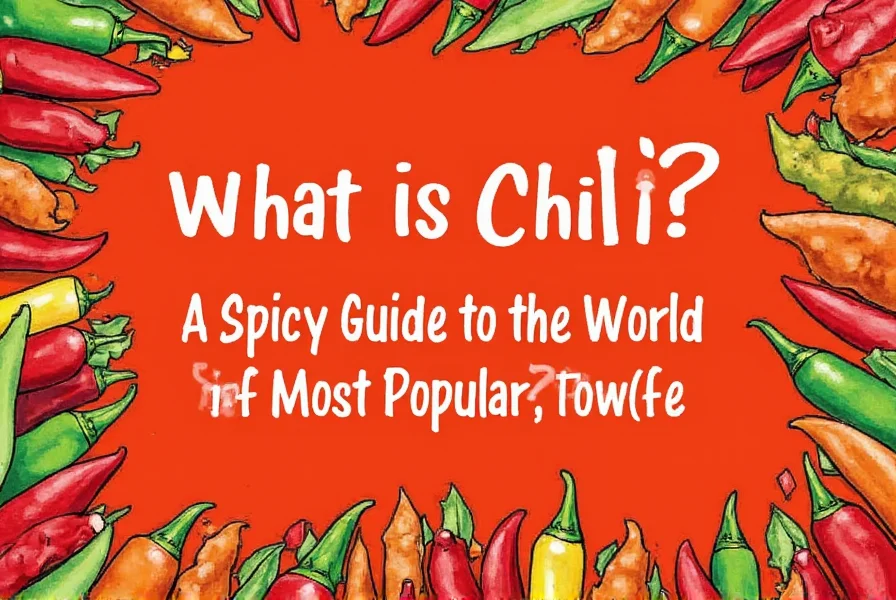
Remember, the chili guide isn't just about heat—it's about flavor, versatility, and creativity. With the right knowledge, you can confidently experiment with different chilies, creating dishes that are both delicious and exciting. So next time you reach for a chili, think about how you can use it to elevate your cooking. Happy cooking!
Expand your chili guide today and discover a world of flavor that will take your dishes to the next level.

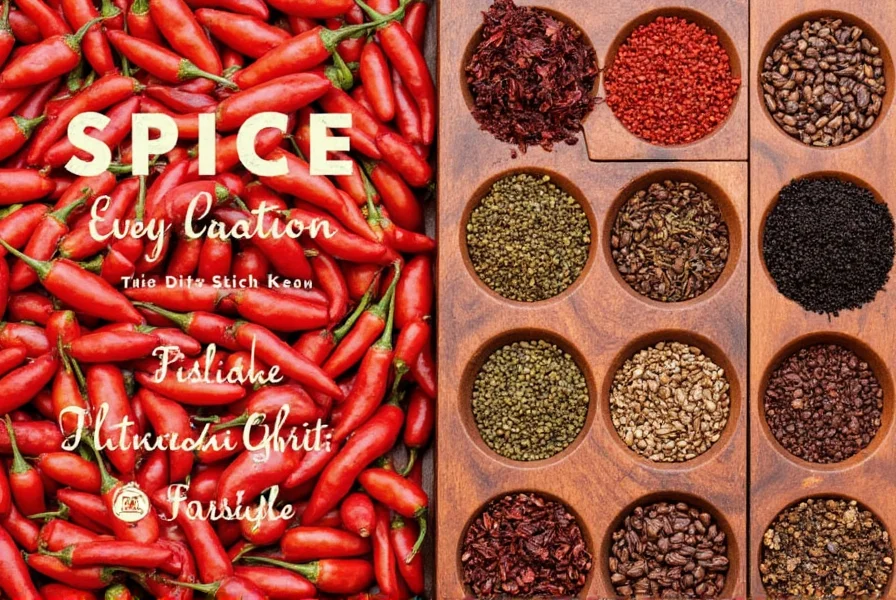









 浙公网安备
33010002000092号
浙公网安备
33010002000092号 浙B2-20120091-4
浙B2-20120091-4